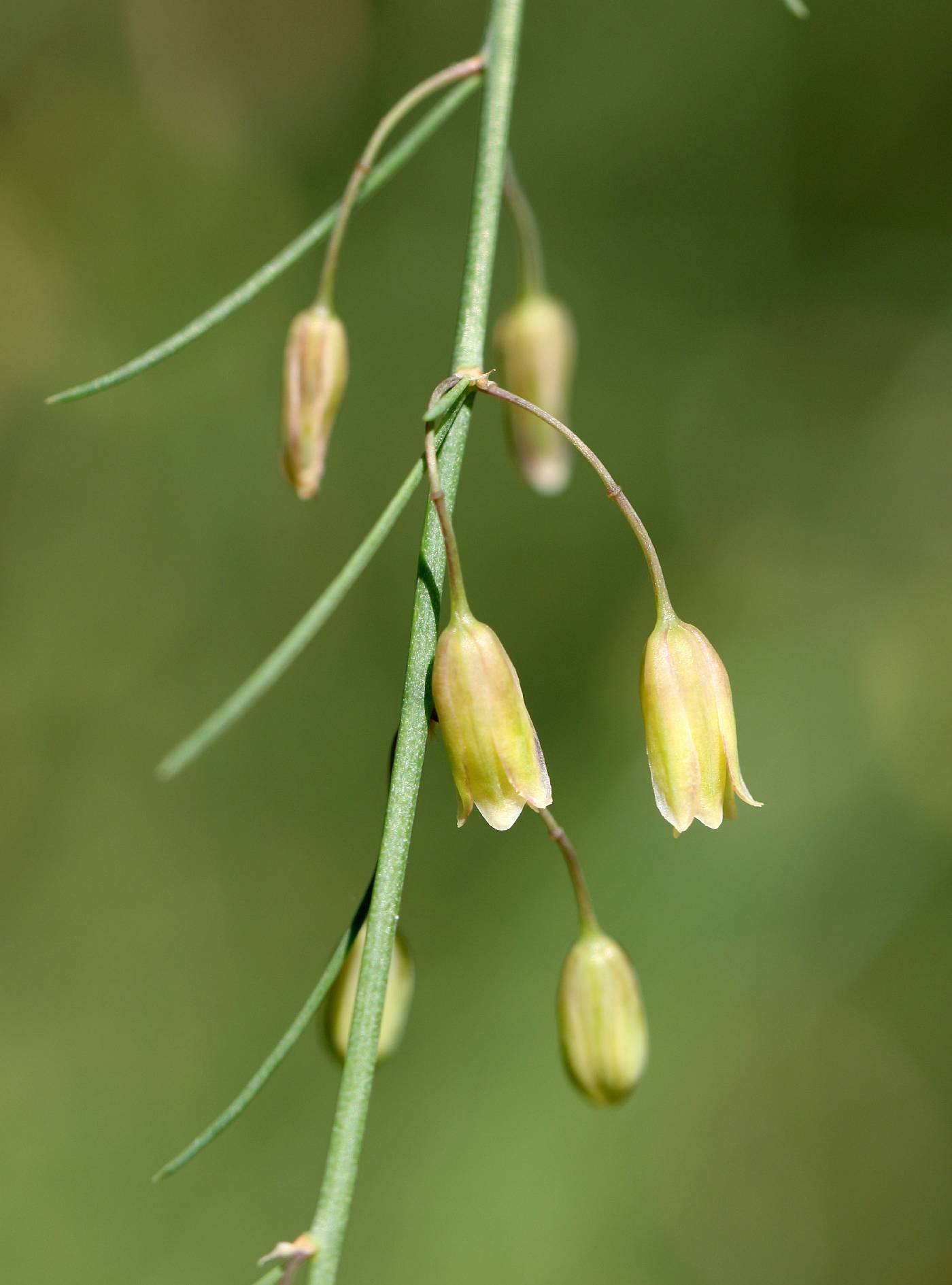|
Family: Asparagaceae |
Herbs, shrubs, or vines, perennial, from rhizomes, usually with fusiform tubers, often with fernlike appearance. Stems photosynthetic, erect, spreading or climbing, branched; cladophylls solitary or fasciculate, in nodes of reduced, scarious leaves. Leaves small, scale-like, membranous, or sometimes spiny with hardened base, subtending cladophylls. Inflorescences axillary or terminal, racemose, or umbellate, paired or solitary; racemes short. Flowers bisexual or unisexual; perianth greenish, white, or yellowish, campanulate to rotate; tepals 6, distinct or shortly connate basally, equal; stamens 6, distinct, equal; anthers versatile, 2-locular, dehiscence introrse; ovary superior, 3-locular, septal nectaries present; style 3-branched distally; pedicel with conspicuous joint. Fruits baccate, red or purplish black, globose, often with tepals persisting at base. Seeds 1-6, black, globose to angular. x = 10. Asparagus is a moderately important horticultural genus, with one species commonly grown for its edible young shoots and a number of others grown ornamentally. The genus is treated here in a broad sense (K. Kubitzki and P. J. Rudall 1998; W. S. Judd 2001) and encompasses species that have been segregated in several genera (A. L. Takhtajan 1997; S. T. Malcomber and Sebsebe D. 1993). Embryological features (P. J. Rudall et al. 1998) and DNA-based analyses (M. W. Chase et al. 1996; M. F. Fay et al. 2000; P. J. Rudall et al. 1997) support the monophyly of Asparagus and the Asparagaceae. Asparagus virgatus Baker has been collected once as a garden escape in East Baton Rouge Parish, Louisiana, but it is probably not truly naturalized in the flora. Asparagus falcatus Linnaeus occasionally persists after cultivation in the Miami-Dade County area of southern Florida (W. S. Judd 2001).
Fls perfect or unisexual; perianth tubular to campanulate, the tep separate or united; stamens 6, inserted on the base of the perianth; filaments slender; anthers oblong, introrse; ovules 2 in each of the 3 locules; style slender; stigmas 3, short; fr a berry with a few large rounded seeds; herbs with the lvs reduced to inconspicuous scales and replaced functionally by branches incapable of further growth and sometimes flattened and lf- like in appearance; fls small. 300, Old World. Gleason, Henry A. & Cronquist, Arthur J. 1991. Manual of vascular plants of northeastern United States and adjacent Canada. lxxv + 910 pp. ©The New York Botanical Garden. All rights reserved. Used by permission. |


